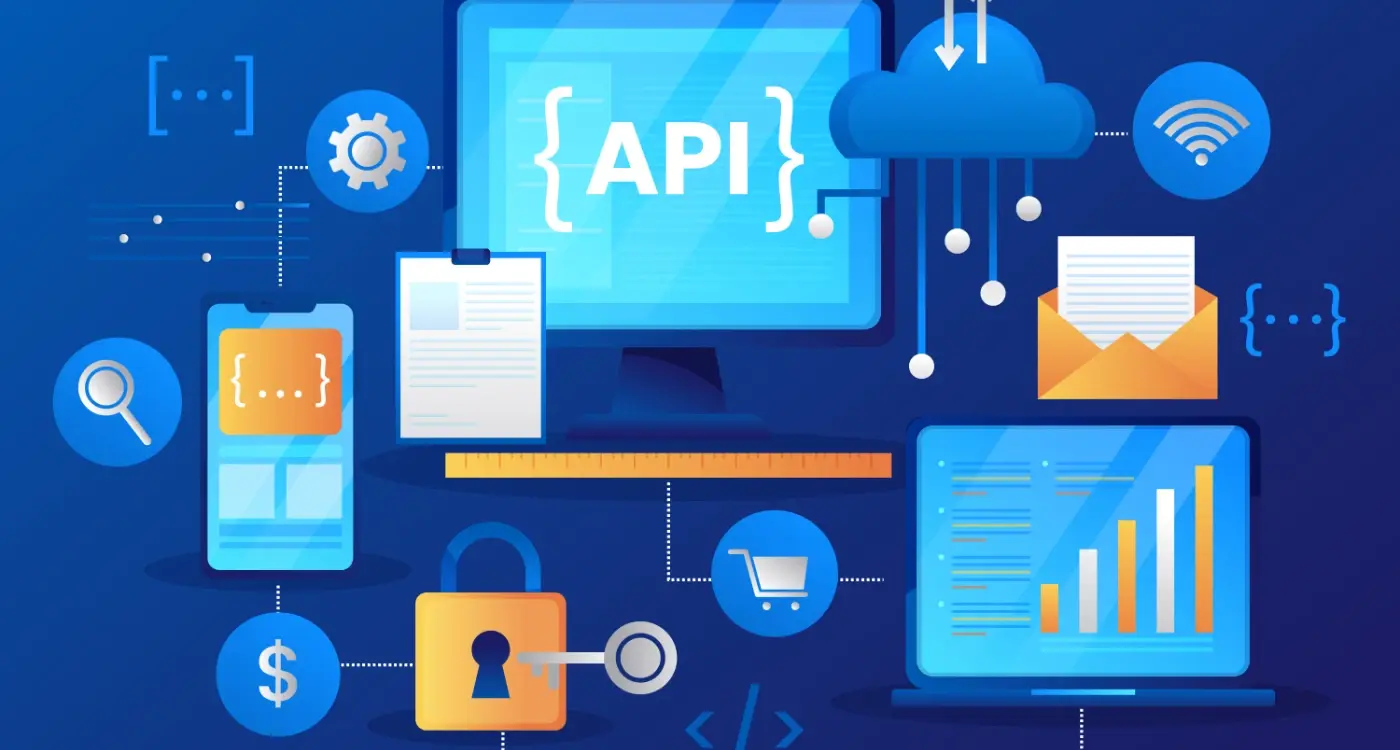How Do You Build an IP Portfolio for Your Mobile App?
A popular property app recently lost millions in revenue when a competitor launched an almost identical platform. Same features, similar design, even comparable branding colours. The original developers had spent two years building their marketplace, but they'd never bothered protecting their intellectual property. Within months, their market share crumbled as users flocked to the copycat app that offered the same experience with better marketing.
This scenario plays out more often than you'd think in the mobile app world. Developers pour their hearts into creating something special, only to watch competitors swoop in and steal their ideas. The thing is, this doesn't have to happen if you build a proper IP portfolio from day one.
Building an intellectual property portfolio for your mobile app isn't just about protecting what you've already created—it's about securing your competitive advantage and creating real business value. When I talk to clients about IP strategy, I always stress that its not just legal paperwork; it's a business tool that can make or break your app's success.
Your app's intellectual property is often more valuable than the code itself—it's what makes your solution unique and defensible in a crowded market
Most app developers think IP protection is something you do after you've made it big. Actually, the opposite is true. The earlier you start building your IP portfolio, the stronger your position becomes. Whether you're a solo developer with a brilliant idea or part of a team building the next big thing, understanding how to protect your mobile app's intellectual property can mean the difference between lasting success and watching someone else profit from your hard work.
Understanding Mobile App Intellectual Property
Right, let's start with the basics—what actually counts as intellectual property when you're building a mobile app? I mean, it's not like you're inventing a physical product you can touch, but your app contains loads of valuable stuff that needs protecting.
When I'm working with clients on their apps, I always explain that intellectual property isn't just one thing. It's like a collection of different types of protection that work together to keep your app safe from copycats and competitors who might fancy stealing your hard work.
The Four Main Types of IP for Apps
- Trade marks - Your app name, logo, and any distinctive branding elements
- Copyright - The actual code you write, plus any content, images, or text in your app
- Patents - Unique features or processes that your app uses (though these can be tricky to get)
- Design rights - The visual appearance and user interface of your app
Here's the thing though—just because you've built an app doesn't automatically mean all of this is protected. Some bits happen automatically (like copyright on your code), whilst others need you to actively apply for them.
The mistake I see loads of app developers make is thinking their idea alone is protected. Ideas aren't intellectual property; it's the execution that matters. You can't stop someone else from making a fitness tracking app, but you can protect your specific way of doing it, your brand name, and your unique features.
Building an IP portfolio is basically about identifying all these different elements in your app and making sure they're properly protected. It takes time and costs money, but trust me—it's worth doing before someone else decides to copy your brilliant work.
Types of IP Protection for Apps
Right, let's break down the different types of protection you can get for your mobile app. I've seen too many developers launch brilliant apps without thinking about this stuff—and honestly, it's a bit mad how much they leave themselves open to copycats and competitors.
There are four main types of intellectual property protection that apply to mobile apps, and each one protects different parts of your creation. You don't have to pick just one; actually, the strongest IP portfolios use multiple types working together.
The Four Main Types
- Trade marks - protect your app name, logo, and branding elements that identify your business
- Copyright - automatically protects your code, graphics, text content, and other creative works
- Patents - protect unique technical features, methods, or processes your app uses
- Design rights - protect the visual appearance and user interface design of your app
Here's the thing—each type has its own strengths and weaknesses. Copyright kicks in automatically when you create something original, but it doesn't stop someone from building similar functionality. Patents give you strong protection for unique features, but they're expensive and take ages to get approved. Trade marks are brilliant for protecting your brand identity, whilst design rights focus specifically on how your app looks and feels.
Start with trade mark protection for your app name and logo—it's relatively quick and affordable, plus it gives you immediate brand protection whilst you're figuring out your broader IP strategy.
The key is understanding what each type actually protects. You wouldn't use a trade mark to protect your source code, just like you wouldn't rely on copyright to stop competitors using your brand name. Getting this right from the start saves you headaches (and money) later on.
Trade Marks and App Branding
Your app's name is probably the most valuable piece of intellectual property you'll ever own. I mean, think about it—users search for your app by name, they recommend it by name, and they build emotional connections with your brand through that name. But here's the thing that catches so many app developers off guard: just because you've registered a domain name or secured your social media handles doesn't mean you own the trade mark rights.
Trade marks protect your app's name, logo, and any distinctive branding elements that help users identify your product in the marketplace. Actually, you don't even need to register a trade mark to have some protection—common law rights start building up as soon as you use your brand commercially. But registered trade marks give you much stronger legal protection and the right to use that little ® symbol that tells competitors you mean business.
What Can You Trade Mark?
When it comes to mobile apps, there are several elements you can protect with trade marks:
- Your app name and any variations or shortened versions
- Your company logo and app icon designs
- Unique taglines or slogans you use in marketing
- Distinctive colour schemes or visual branding elements
- Sound marks (like notification sounds or jingles)
One mistake I see constantly is developers choosing names that are too descriptive. You can't trade mark "Photo Editor Pro" because it simply describes what the app does. But you could potentially trade mark something like "Snapspeed" or "Pixelcraft" because these are distinctive names that don't just describe the function.
The Registration Process
Getting your trade mark registered isn't complicated, but it does take time—usually 6-12 months in the UK. You'll need to file your application with the Intellectual Property Office and specify which classes of goods and services you want protection for. For mobile apps, you'll typically want Class 9 (computer software) and Class 42 (software development services), though you might need others depending on what your app actually does.
Before you file anything though, do your homework. Search existing trade marks to make sure your chosen name isn't already taken. It's heartbreaking to see developers spend months building their brand only to receive a cease and desist letter from someone who got there first.
Copyright Protection for Code and Content
Copyright protection kicks in automatically the moment you write your app's code—no registration needed, which is quite handy actually. Your source code, user interface designs, graphics, text content, and even your app's unique structure are all covered under copyright law. But here's where it gets interesting: copyright protects the expression of ideas, not the ideas themselves.
This means your beautifully crafted Swift or Kotlin code is protected, but the underlying functionality? Not so much. Someone can't copy your code line by line, but they can absolutely create their own version that does the same thing. It's a bit like protecting the recipe but not the cake, if you know what I mean.
What Copyright Actually Covers
Your app's visual elements—icons, images, animations, and custom graphics—get strong copyright protection. Same goes for any written content like onboarding text, help documentation, or marketing copy within the app. The tricky bit comes with user interface layouts; whilst the specific visual design is protected, the general concept of having a navigation bar or swipe gestures isn't.
The strongest copyright protection often comes from the creative elements users see and interact with, not necessarily the code running behind the scenes
Open source libraries present their own challenges—you can't claim copyright over code you didn't write, and mixing proprietary code with certain open source licences can create complications. Always check licence compatibility before integrating third-party components. For maximum protection, document your development process, keep detailed records of original work, and consider registering copyright for particularly unique visual or written content that forms a core part of your app's identity.
Patent Protection for App Features
Right, let's talk about patents for mobile apps—this is where things get a bit tricky, and honestly, it's one of the most misunderstood areas of app IP protection. I mean, you can't just patent the idea of "an app that does shopping" but you might be able to patent a specific technical method your app uses to process payments or organise data.
Patent protection covers new inventions or technical processes. For mobile apps, this usually means the underlying algorithms, unique data processing methods, or novel technical solutions your app uses. Think about Uber's surge pricing algorithm or Tinder's matching system—these are the kinds of technical innovations that could potentially be patentable.
What Can Be Patented in Apps
You're looking at technical solutions that solve specific problems in new ways. Machine learning algorithms, data compression techniques, security protocols, or unique user authentication methods. But here's the thing—it needs to be genuinely new and not obvious to other developers in your field.
The patent process is expensive and time-consuming; we're talking thousands of pounds and potentially years before you get approval. Plus, software patents are quite controversial and the landscape changes regularly depending on court decisions.
- Novel algorithms or data processing methods
- Unique security or encryption techniques
- Innovative user interface interactions (if technically complex)
- New methods for device integration or hardware interaction
- Original machine learning or AI approaches
My advice? Don't rush into patent applications unless you've got something genuinely groundbreaking and the budget to defend it. Patents are only as strong as your ability to enforce them, and that can get very expensive very quickly. For most apps, focusing on trade marks and keeping your competitive advantage through execution rather than patents makes more business sense.
Design Rights and User Interfaces
Design rights protect the visual appearance of your app's interface—basically how things look rather than how they work. I mean, if you've spent months perfecting that sleek button design or crafting the perfect colour scheme, you want to make sure no one can just copy it wholesale, right?
In the UK, design rights come in two flavours: registered and unregistered. Unregistered design rights happen automatically when you create something original, but they're weaker protection; registered design rights require an application but give you much stronger legal ground to stand on. The thing is, most app developers don't even think about this stuff until its too late.
Your app's user interface elements—icons, layouts, colour schemes, even the way screens transition—can all qualify for design protection. But here's where it gets tricky: the design has to be genuinely new and have individual character. You can't just register a standard blue button and expect protection!
What Actually Gets Protected
Design rights cover the visual elements users see and interact with. Your custom icons, unique layout arrangements, distinctive loading animations, and even the overall visual identity of your app interface can all be protected. However, functional elements that are purely technical usually won't qualify—it's about aesthetics, not functionality.
Screenshot every major design iteration during development. These timestamped records become your evidence of creation dates, which can be crucial if you ever need to prove when you first designed specific interface elements.
The registration process is relatively straightforward compared to patents, but you need to do it before you launch publicly. Once your design is out there for everyone to see, you've got a limited window to file for protection. Don't wait until someone copies your design to start thinking about this—by then, it might be too late to get the protection you need.
Defensive IP Strategies
Right, let's talk about something that makes most app developers uncomfortable—defensive IP strategies. I get it, nobody wants to think about legal battles when they're busy building the next big thing. But here's the reality: the more successful your app becomes, the bigger target you paint on your back.
Defensive IP isn't about being aggressive or going after competitors. It's about protecting yourself from people who might try to steal your ideas or, worse, claim you've stolen theirs. I've seen brilliant apps get buried under patent trolls and trademark disputes that could have been avoided with some basic defensive planning.
Building Your Defence Network
Think of defensive IP like insurance for your app business. You hope you'll never need it, but when trouble comes knocking, you'll be bloody glad its there. The key is building what I call overlapping protection—using multiple types of IP to create layers of defence around your core business.
- File trade marks early for your app name and key features
- Document your development process with timestamps and version control
- Consider filing defensive patents for your most unique features
- Register design rights for distinctive visual elements
- Keep detailed records of when you created original content
- Monitor the market for potential infringement of your IP
One thing I always tell clients—don't wait until you're successful to start thinking about IP protection. By then, it might be too late. The best defensive strategies start early, even when your app is just an idea on a napkin.
Also, consider joining industry groups or IP consortiums. Sometimes the best defence is being part of a community that shares defensive patents and helps smaller players avoid getting steamrolled by bigger companies with massive legal budgets.
Building an IP portfolio for your mobile app isn't just about protecting what you've already created—it's about setting yourself up for long-term success in a competitive market. I've seen too many brilliant apps struggle because their creators didn't think about intellectual property until it was too late. And honestly? It's always more expensive to sort out IP issues after they've become problems.
The key thing to remember is that your IP strategy should grow with your app. Start with the basics—get your trade marks filed, document your development process properly, and make sure you own all the rights to your code and content. But don't stop there. As your app evolves and gains traction, look for opportunities to strengthen your position through design registrations or even patent applications if you've developed something genuinely novel.
What I find really works is treating your IP portfolio like a business asset, not just a legal requirement. Sure, it costs money upfront, but it's an investment that pays dividends when you're negotiating partnerships, seeking investment, or—dare I say it—dealing with competitors who might fancy copying your best features. A solid IP portfolio gives you options; without one, you're basically hoping nobody notices your success.
The mobile app world moves fast, and user expectations keep rising. But the fundamentals of protecting your intellectual property remain the same—be proactive, be thorough, and don't try to cut corners. Your future self will thank you when you've got the legal backing to protect what you've built and the freedom to innovate without constantly looking over your shoulder.
Share this
Subscribe To Our Learning Centre
You May Also Like
These Related Guides

How Do You Licence APIs for Your Mobile Application?

When Should You Hire a Regulatory Expert for Your App?



